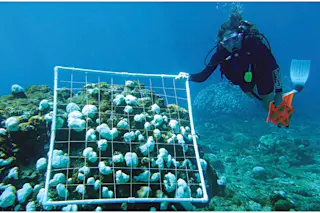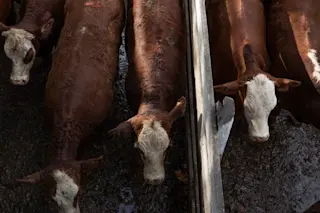Bluefin tuna--they're so delicious, they're on the brink of extinction. The human appetite for this majestic fish has spurred overfishing that has endangered the wild population, so researchers and aquaculture companies are trying to breed the fish in captivity. But so far bluefin tuna have proved very difficult to farm, since it's impossible to replicate their natural reproductive cycle--researchers think the fish travel hundreds of miles to their traditional spawning grounds. The best results so far have come from an Australian company that is using hormone injections to get the big fish to breed. Now researchers associated with a European project called Selfdott (an odd acronym for "self-sustained aquaculture and domestication of thunnus thynnus") say they can successfully raise fish in captivity without using hormones. The New York Timesreports that the first batch of fish, raised in floating cages, died after a matter of weeks or months, but researchers still ...
Can Endangered Bluefin Tuna Be Saved by Fish Farming?
Discover the challenges of bluefin tuna farming as researchers seek sustainable management amidst overfishing threats.
More on Discover
Stay Curious
SubscribeTo The Magazine
Save up to 40% off the cover price when you subscribe to Discover magazine.
Subscribe












